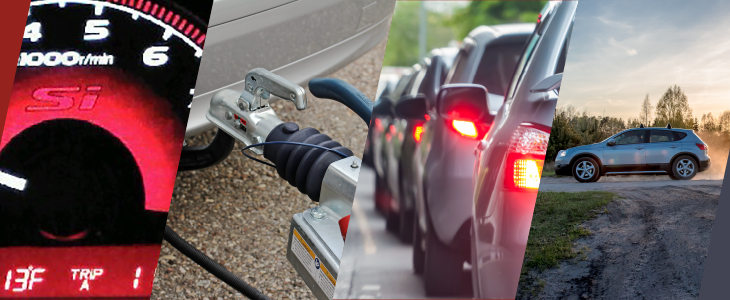
How Normal and Severe Driving Conditions Compare and What the Difference Means for the Filters That Keep a Vehicle Running Strong
Welcome to 2020! We’ve just kicked off a brand-new decade and for many of us in North America, that means driving around in frigid temperatures – sometimes during extreme inclement weather. If you’re like most people, you haven’t given much thought to the impact that driving in cold or hot climates can have on a vehicle. Here in Massachusetts, sub-freezing temps, snow, and ice are par for the course and “normal” for anyone who lives here between November and April. Automakers, however, don’t feel that there’s anything “normal” about the driving conditions here. Drivers and installers need to be aware of what conditions a vehicle is most frequently used in because change intervals and functionality for important components, such as fluids and filters, will be impacted greatly.
All automakers provide some kind of guidance for preventative maintenance within a vehicle’s warranty and maintenance guide. Over the last decade or so the emphasis in most of these guides has been to dramatically extend service intervals, which make the vehicles as “maintenance-free” as possible – a feature of major importance to many drivers. The catch here is that there isn’t just one recommendation for each aspect of preventative maintenance. There are usually two – a recommendation for “normal” driving conditions and one for “severe” driving conditions. It’s up to the driver or the installer to understand which recommendation they should follow based on driving habits and other factors such as climate or weather. The big problem is that most people believe they drive in “normal” conditions when they actually check off more boxes in the “severe” column. Let’s take a look at how the two designations differ.
The wording and mileage ranges will vary slightly from one automaker to the next, but in general, these are the criteria for what constitutes “normal” driving conditions:
- Vehicle is driven approximately 12,000 to 15,000 miles per year
- Vehicle is used for an even blend of local and highway driving
- Minimal hills – It’s assumed that the vehicle will be driven on mostly flat or near-flat roads.
- Vehicle is primarily driven in a mild climate with average weather patterns
As you can see, it’s a fairly short list and the conditions probably don’t sound realistic to most reading this.
Everything else is considered “severe”, but for the sake of this discussion, here are the most common “severe” driving situations:
- Vehicle is frequently idled for long periods
- Vehicle is subjected to stop-and-go driving – whether in the city or highway traffic
- Vehicle is driven long distances on the highway in hot temperatures
- Vehicle is used for long-distance trips at speeds that don’t go over 50mph
- Vehicle is frequently started in freezing temperatures
- Vehicle is frequently used for short trips in any temperature, including normal
- Vehicle is driven over rough terrain that includes steep hills or mountains
- Driving on any road that isn’t clean pavement (dusty, dirty, muddy, salted, or gravel roads)
- Vehicle is used for any kind of towing
- Any trip that adds excessive weight to the vehicle through the use of roof rack or car-top carrier
Finding that many more items off the “severe” list apply to your driving situation? Surprised? Well, you’re not alone. The reality is that most people are actually driving in “severe” driving conditions and don’t realize it. It’s wise for vehicle owners to be honest with themselves and their installers about which recommendations they should really be following. Failure to do so will almost certainly lead to mechanical problems down the road.
If you or your customer is driving in “severe” conditions, preventative maintenance is the key to the vehicle’s longevity. Let’s take a look at how driving in these conditions can impact the recommended filters and their change intervals for any vehicle.
The Oil Filter
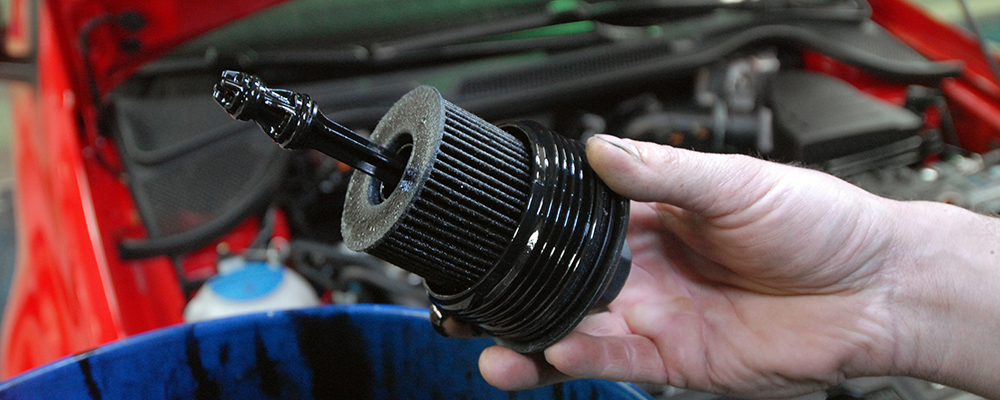
The oil filter is an engine’s first line of defense against excessive wear and tear on internal parts and it is the filter that is most impacted by changes in driving conditions. As an example, a newer Toyota vehicle might recommend that oil and oil filter be changed at 10,000 miles when the vehicle is driven under “normal” conditions. However, if your driving habits frequently put your car through any of the items from the “severe’ list above, your change interval is now 5,000 miles. Idling for long periods, stop and go traffic, frequent cold starts, and towing all subject the engine to added stress which means a much faster drop in oil viscosity, more metal on metal friction and subsequently, more contaminants for the filter to catch. For “severe” drivers, it’s not a good idea to try to maximize oil change intervals.
The Air Filter
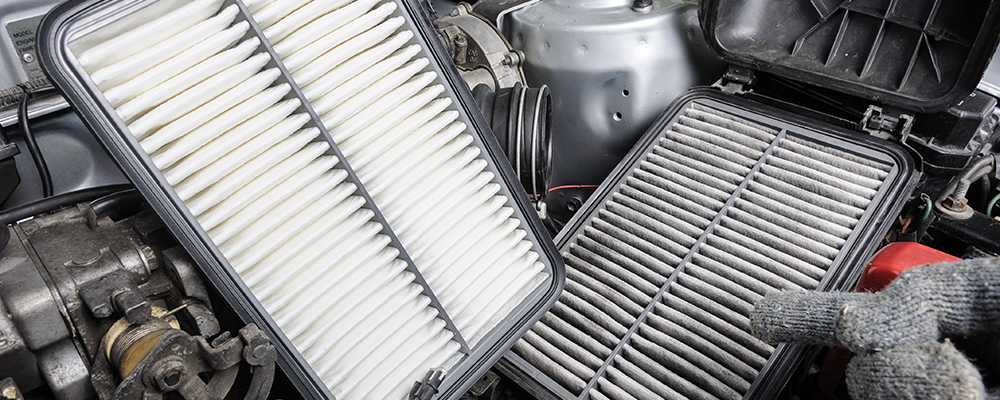
The engine air filter is also an extremely important engine protection component. Its job is to filter particles out of the air which the engine needs to breathe in order to run properly. The engine air filter is also greatly impacted by changes in driving conditions. As a general rule, most automakers and aftermarket suppliers recommend a 12,000-mile change interval for the engine air filter. However, if someone checks off certain situations in our “severe” conditions list, more frequent inspection and replacement will be appropriate. Driving through rough terrain, dirt, dust, mud or during a season where an excessive amount pollen is blowing around – all reasons for more frequent air filter replacement.
The Cabin Air Filter
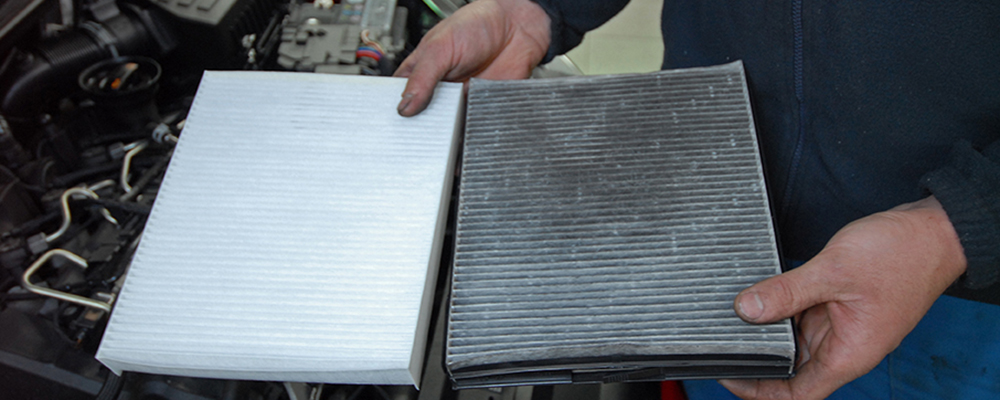
The cabin air filter doesn’t protect the car’s engine, but it does perform a critical job – protecting the respiratory health of drivers and passengers riding in the cabin. As such, this filter is also greatly impacted by driving conditions that include rough terrain, dirt roads, dry climate, high pollen counts and excessive leaves or pine needles. All of these situations are considered “severe” and if someone finds themselves driving under these conditions often, they should replace the cabin air filter with more frequency than what is called for under “normal” driving conditions.
The Diesel Fuel Filter
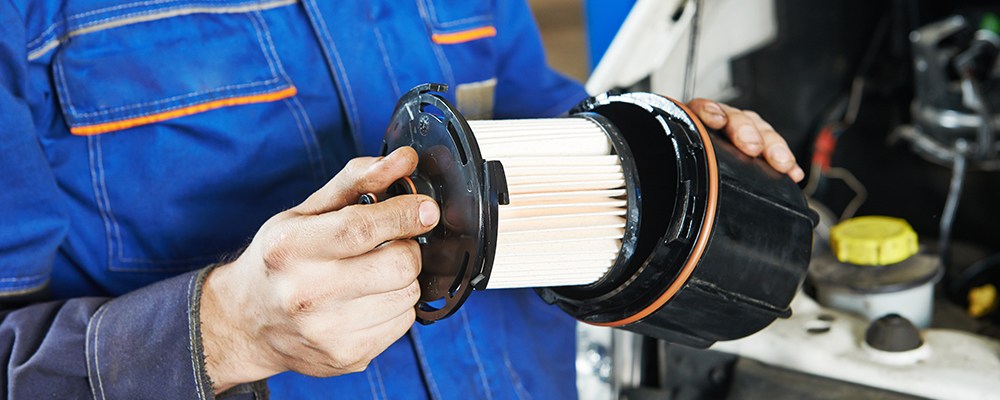
Unlike the fuel filters used with gas engines, fuel filters that filter diesel require quite a bit of maintenance to keep an engine running well. This is because the physical properties of diesel fuel are significantly affected by changes in climate, with cold weather being particularly troublesome. When diesel fuel cools down during storage, dissolved water will be released as small droplets. When the droplets do not drop to the bottom, they will form a haze that can be seen on cold mornings after overnight storage and will disappear when the fuel warms up. The result is what looks like a greasy emulsion on blocked fuel filters. Another common issue with diesel fuel in cold climates is wax deposits. When the fuel is cooled below the temperature at which the wax comes out of solution, it can block the fuel filter by forming a waxy, yellow looking deposit.
The Transmission Filter
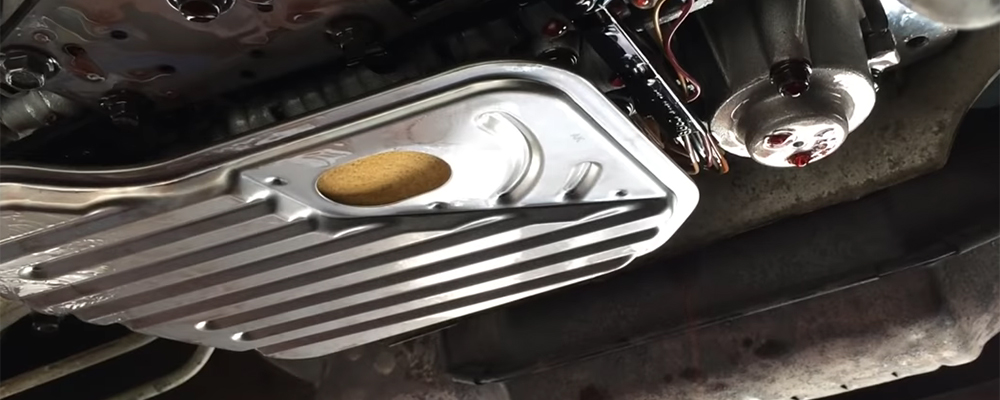
The transmission filter is another one that might seem like a small component, but don’t kid yourself – it has a big job to do and the way the vehicle is driven will have a major impact on how long it lasts. A vehicle’s transmission filter is usually made of a felt-like material and does exactly what the name implies – it filters contaminants out of the transmission fluid, which might prematurely wear the parts of your transmission. It doesn’t take much of a leap to understand that any driving other than in “normal” conditions will make a difference in how often the filter has to be replaced. Most manufacturers recommend transmission filter service every 2 years or 30,000 miles – whichever comes first. Anyone who does a lot of stop-and-go driving, driving for long distances in hot temperatures, rough terrain, short trips, or any kind of towing should consider checking the transmission fluid and replacing the transmission filter with more frequency.
Honesty is the Key to Longevity
When it comes to preventative maintenance, it’s critical that drivers be honest with themselves about their actual driving habits and the conditions that their vehicles are subjected to. It’s natural to want to maximize the change intervals that automakers or dealers have sold drivers on. Unfortunately, the recommended change intervals for “normal” driving conditions are more of an auto care mirage than reality. If you’re unsure of which side of the line your vehicle falls on, it’s best to err on the side of caution and go with the “severe” maintenance recommendation. The vehicle will run better and last longer. It’s that simple.
Share this entry